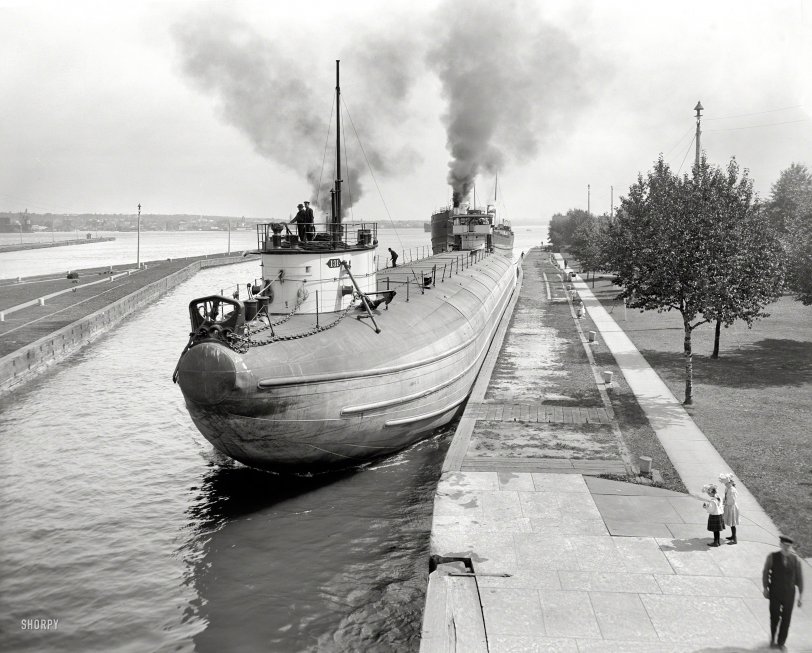


Framed or unframed, desk size to sofa size, printed by us in Arizona and Alabama since 2007. Explore now.
Shorpy is funded by you. Patreon contributors get an ad-free experience.
Learn more.

- Lost in Toyland
- And without gloves
- If I were a blindfolded time traveler
- Smoke Consumer Also Cooks
- Oh that stove!
- Possibly still there?
- What?!?
- $100 Reward
- Freeze Frame
- Texas Flyer wanted
- Just a Year Too Soon
- WWII -- Replacing men with women at the railroad crossing.
- Yes, Icing
- You kids drive me nuts!
- NOT An Easy Job
- I wonder
- Just add window boxes
- Icing Platform?
- Indiana Harbor Belt abides
- Freezing haze
- Corrections (for those who care)
- C&NW at Nelson
- Fallen Flags
- A dangerous job made worse
- Water Stop
- Passenger trains have right of way over freights?
- Coal
- Never ceases to amaze me.
- Still chuggin' (in model form)
- Great shot
Print Emporium
Whaleback: 1910

Circa 1910. "Whaleback barge entering Weitzel Lock, Sault Sainte Marie, Michigan." 8x10 inch glass negative, Detroit Publishing Co. View full size.
Clean seams
Welded ship hulls started in 1917 or so, so this is way too early. Possibilities are flush rivets with countersinking and simply an optical illusion; the thickness of the plates exceeds the protrusion of the rivets enough that you don't see it. You can see this with many pictures of ships where a close up would clearly show rivets.
What is a Whaleback?
Whaleback \Whale"back`\, n. (Naut.)
A form of vessel, often with steam power, having sharp ends
and a very convex upper deck, much used on the Great Lakes,
esp. for carrying grain. Source: Free Dictionary
whaleback (ˈweɪlˌbæk)
— n
1. something shaped like the back of a whale
2. a steamboat having a curved upper dec Source: Dictionary.com
Clean seams?
The seams look welded. 1893 seems early for the process on such a large scale. Any info?
Kodak Moment
It appears that the little girl dressed in her Sunday finest at the lower right is snapping a 'Kodak' of the whale.
One Whaleback Survives
The S. S. Meteor is on display in Superior, Wis.
About whaleback barge no. 131
This barge lasted over fifty years, from its delivery in 1893 to its scrapping in 1946. It was constructed by American Steel Barge in Superior, Wisconsin, when that company was under the ownership of the whalebacks' greatest friend, Alexander McDougall. When owned by Bessemer Steamship Corp. and then Pittsburgh Steamship Co., it was based in Duluth. This barge was part of a small fleet later sold to Great Lakes Engineering Works of Ecorse, Michigan. It was badly damaged in a collision in October 1905, between the Soo Locks and Lake Huron. Before it was moved in 1912 from the Great Lakes to the Atlantic coast for use in the New England coal trade, its length was shortened by 31 feet (from its original 292 feet). It was then renamed the Salem. Several decades and name changes later, its service came to an end in Houston.
























On Shorpy:
Today’s Top 5